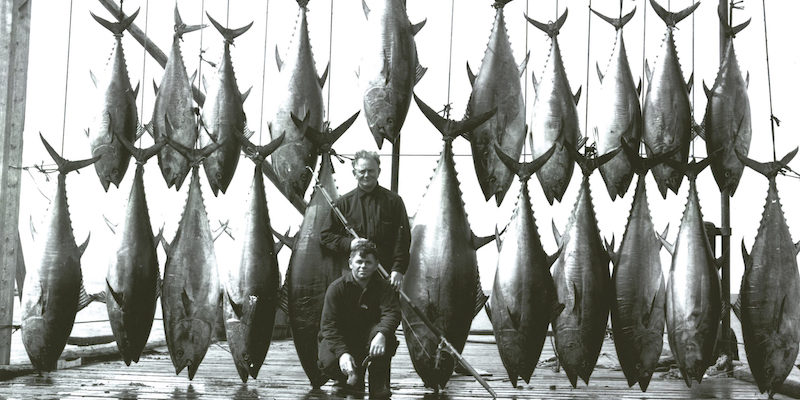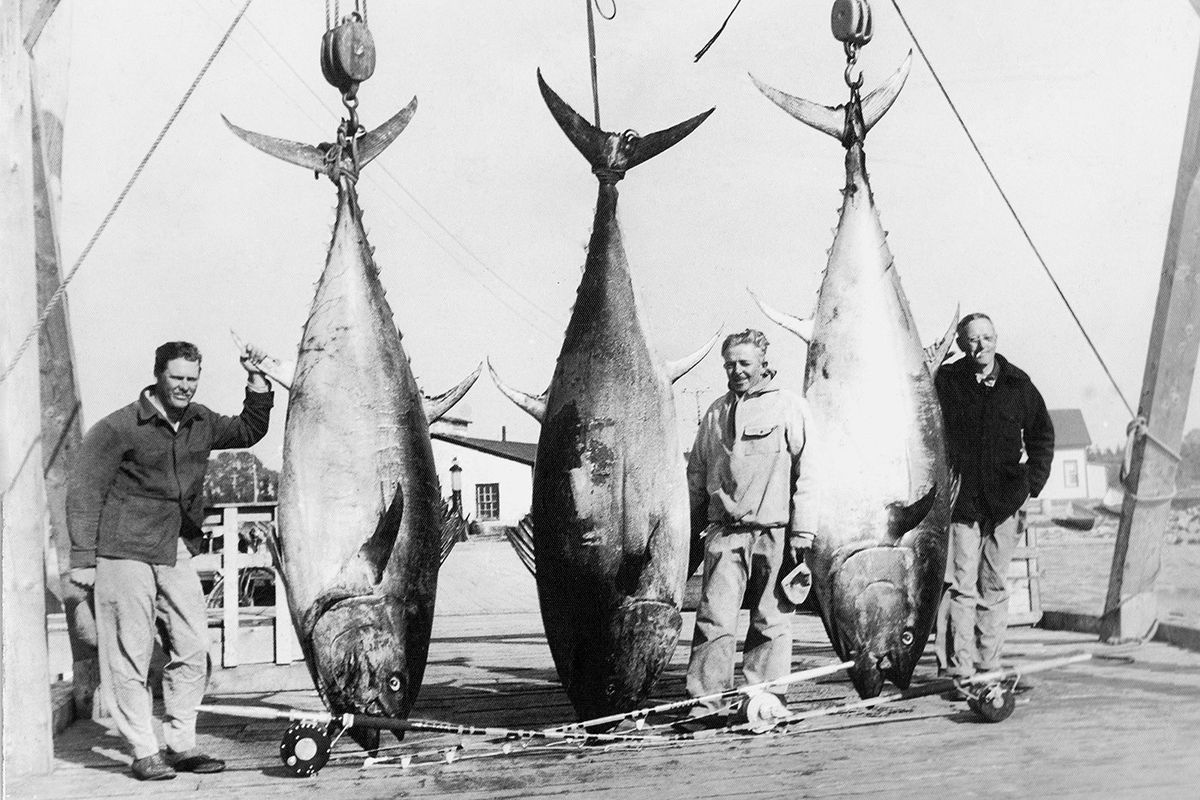The History of Bluefin Tuna and Its Economic Impact: From Ancient Waters to Modern Markets
The bluefin tuna, one of the most prized marine species, has a rich history that stretches back millennia. Its economic significance has grown dramatically over the past century, evolving from a staple food in ancient civilizations to one of the most valuable commodities in modern global markets. This highly migratory species, known for its size, speed, and exquisite taste, is now the centerpiece of international auctions and luxury dining.
In this blog, we will explore the history of bluefin tuna, tracing its journey from its early role in human societies to its current status as a culinary and economic marvel. We will also analyze the economic forces driving its soaring prices and the complex interplay between fishing, market demand, and conservation efforts.

I. The Ancient History of Bluefin Tuna
A. Bluefin Tuna in Early Human Civilizations
- Mediterranean Origins: A Staple Food Source
The history of bluefin tuna can be traced back to ancient civilizations around the Mediterranean, where it was a crucial food source. Archaeological evidence suggests that the Greeks, Romans, and Phoenicians actively fished for bluefin tuna as early as 6,000 years ago. Inscriptions, paintings, and pottery from these ancient societies often depict the importance of tuna in their diets and trade.
- Greek Fishermen: The Greeks referred to the bluefin tuna as “thunnos,” and it was an essential part of their diet, often caught along the coasts of the Aegean Sea. They developed specialized techniques, such as the use of “madragues” (trap nets), to capture these giant fish.
- Roman Economy: The Romans further developed large-scale tuna fishing and trade networks. Salted and dried tuna, known as garum, was a sought-after product in Roman markets, and bluefin was highly prized for its rich taste. Tuna also played a role in Roman social and religious rituals.
- Phoenician and Carthaginian Trade Networks
The Phoenicians and Carthaginians, two seafaring cultures, developed early international trade routes involving bluefin tuna. The fish was transported across the Mediterranean to cities such as Carthage and beyond, forming an integral part of the ancient economy. These trade routes laid the foundation for bluefin tuna’s future global economic importance.
II. The Industrialization of Tuna Fishing
A. Early Industrial Fishing Techniques
- Expansion in the 19th and 20th Centuries
As industrialization expanded in the 19th and early 20th centuries, so did the demand for bluefin tuna. European and North American fishing fleets became more sophisticated, employing steam-powered vessels and more efficient nets. In particular, the invention of the purse seine, a large wall of netting that encircles the fish, revolutionized tuna fishing, allowing for larger catches in less time.
- Canning Industry: Bluefin as a Commodity
The advent of canning in the mid-19th century also spurred a boom in tuna fishing. Although much of the canned tuna industry initially relied on smaller species like albacore and skipjack, bluefin tuna soon became a significant part of the canned food market. Canned tuna allowed the fish to be preserved and exported over great distances, expanding its economic impact and increasing global demand.
III. Bluefin Tuna in Modern Markets: A Luxury Commodity
A. The Rise of Sushi and Sashimi Culture
- Japan’s Role in Creating the Tuna Market
In the late 20th century, Japan’s growing affluence and the globalization of sushi culture transformed the market for bluefin tuna. Historically, bluefin was not a popular fish for sushi, but Japanese chefs began to experiment with different cuts, particularly the fatty belly meat known as otoro. As demand grew, so did prices.
- The Toyosu Market: Japan’s Toyosu Market (formerly Tsukiji Market) is now the world’s largest fish market and serves as the hub for the bluefin tuna trade. At annual New Year auctions, bluefin tuna prices can reach astronomical heights, with the record being set in 2019 when a single tuna sold for $3.1 million. This auction has become a cultural event in Japan, symbolizing both prosperity and status.
- Western Adoption of Sushi
Sushi’s international expansion, particularly in North America and Europe, further boosted bluefin tuna’s economic significance. High-end sushi restaurants in cities like New York, Los Angeles, and London began serving bluefin tuna as a luxury item, commanding prices far higher than other fish. This has led to a significant increase in demand, particularly for premium cuts like otoro and chutoro.
IV. Economic Forces Driving the Bluefin Tuna Market
A. Supply and Demand Dynamics
- Scarcity and Price Inflation
The supply of bluefin tuna is highly constrained due to its long life cycle and migratory patterns, coupled with overfishing. As populations decline, particularly in the Atlantic and Mediterranean, the fish has become rarer and more valuable. This scarcity has led to significant price inflation, with prices sometimes reaching thousands of dollars per pound.
- Global Trade and Auction Prices
Bluefin tuna is traded globally, with Japan, the United States, and Europe being the primary markets. The Toyosu auction in Japan often sets the tone for international prices, and large buyers, including sushi restaurant chains and luxury dining establishments, are willing to pay top dollar for the best-quality fish.
B. Tuna as a Status Symbol
- Luxury Dining and Exclusivity
Bluefin tuna has emerged as a status symbol in fine dining. Chefs often advertise the origin and quality of their tuna, with some even specifying the exact auction lot from which the fish was purchased. The exclusivity of serving bluefin tuna, particularly the prized belly cuts, reinforces its luxury status and drives consumer willingness to pay premium prices.
- Economic Impact on Local Fisheries
For fishing communities, particularly in Mediterranean countries like Spain, Italy, and Malta, bluefin tuna represents a critical economic resource. The high prices paid at auctions provide significant income for local fishermen, although the industry remains highly regulated due to conservation concerns.
V. Overfishing and Conservation Challenges
A. The Decline of Bluefin Tuna Populations
- Overfishing Crisis
The rapid increase in demand for bluefin tuna has led to overfishing, particularly in the Atlantic and Mediterranean. By the 1970s and 1980s, bluefin tuna populations had declined by as much as 80%, prompting urgent calls for conservation efforts. Illegal fishing operations and unregulated international waters have exacerbated this issue, as tuna remain difficult to monitor and protect.
- International Conservation Efforts
Organizations like the International Commission for the Conservation of Atlantic Tunas (ICCAT) have implemented strict quotas to manage bluefin tuna populations. These quotas aim to ensure the sustainability of the species while maintaining the economic viability of the fishing industry. However, the balance between conservation and economic interests remains contentious, with some arguing that quotas are either too lenient or too restrictive.
VI. The Economic Impact of Bluefin Tuna Today
A. Tuna Auctions and Global Trade
- The Economics of the Toyosu Market
At Tokyo’s Toyosu Market, the world’s largest fish auction, bluefin tuna plays a central role in driving the local economy. High-stakes auctions attract buyers from around the world, and the fish often serves as a barometer for the health of the seafood industry as a whole. The auction’s results are closely watched by global markets, with the winning bids often making international headlines.
- The Global Supply Chain
The economic impact of bluefin tuna extends far beyond the auction floor. After being purchased, the fish travels through a complex supply chain that involves transportation, distribution, and retailing. In high-end restaurants, a single piece of sushi made from bluefin tuna can sell for $50 or more, with the economic benefits trickling down to chefs, suppliers, and fishing communities.
B. Aquaculture and the Future of Bluefin Tuna
- Tuna Farming Innovations
In response to overfishing, efforts to farm bluefin tuna have intensified. Japan, Spain, and several Mediterranean countries have invested in tuna ranching operations that aim to raise bluefin tuna in captivity. However, farming bluefin tuna is a challenging process, requiring significant resources and expertise. While progress has been made, farmed bluefin remains a small portion of the overall market.
- Economic and Environmental Trade-offs
While tuna farming offers a potential solution to the overfishing crisis, it also presents economic and environmental trade-offs. Farming operations are expensive, and critics argue that they can cause environmental harm through pollution and resource consumption. Nonetheless, the future of bluefin tuna farming may hold the key to balancing economic demand with sustainable practices.
Conclusion: The Future of Bluefin Tuna in the Global Economy
The history of bluefin tuna is one of transformation—from a staple food in ancient Mediterranean societies to a luxury commodity in today’s global markets. Its economic impact is vast, affecting fishing communities, international trade, and high-end dining establishments around the world. However, the future of bluefin tuna remains uncertain. Overfishing and environmental concerns have raised questions about the sustainability of current practices, while efforts to farm bluefin tuna offer a potential solution.
As demand for this prized fish continues to grow, finding a balance between economic interests and conservation efforts will be crucial to ensuring that future generations can continue to enjoy bluefin tuna while protecting the species from extinction.
References
- Food and Agriculture Organization (FAO). (2021). “The State of World Fisheries and Aquaculture.” Retrieved from FAO Website
- International Commission for the Conservation of Atlantic Tunas (ICCAT). (2020). “Bluefin Tuna: Management and Conservation Measures.” Retrieved from ICCAT Website
- The Pew Charitable Trusts. (2019). “Sustainable Tuna Fishing: The Path Forward.” Retrieved from Pew Website






